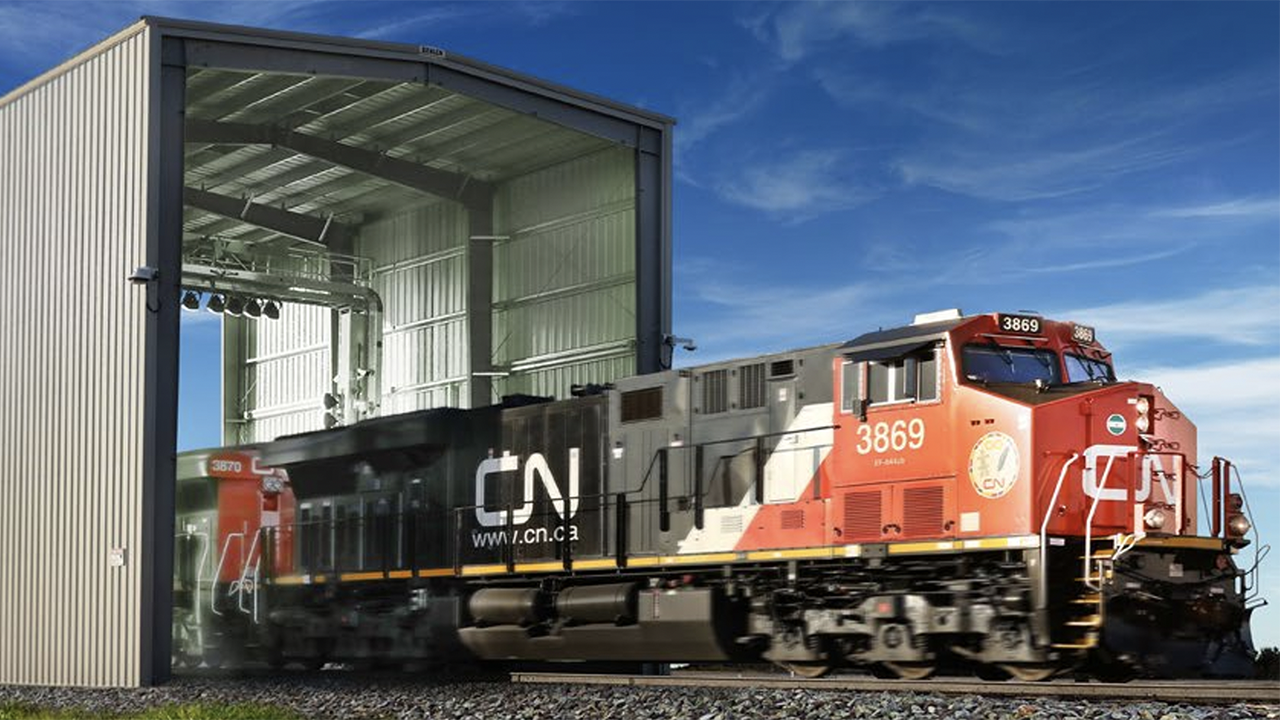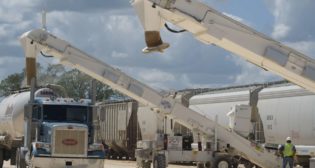![“This record growth [in fiscal year 2024’s third quarter] is a direct result of our innovative logistic solutions during supply chain disruptions as shippers focus on diversifying their trade lanes,” Port NOLA President and CEO and New Orleans Public Belt (NOPB) CEO Brandy D. Christian said during a May 2 announcement (Port NOLA Photograph)](https://www.railwayage.com/wp-content/uploads/2024/05/portnola-315x168.png)
RAC Releases Locomotive Emissions Monitoring Report
Written by Marybeth Luczak, Executive Editor
(CN Photograph, Courtesy of RAC)
Year-over-year, greenhouse gas (GHG) emissions improved across Canadian rail operations, according to the latest Locomotive Emissions Monitoring (LEM) report from the Railway Association of Canada (RAC).
The 66-page report (download below) covers 2021, the most recent year for which data is available, and found that:
- GHG emissions intensity for freight traffic fell 1.2%.
- Total freight GHG emissions intensity decreased by 25.9% since 2005 while traffic increased by 25.5% during the same period.
- Intercity passenger railroads improved their GHG emissions intensity by 18.0% compared with 2020.
- Short line and regional railroads’ GHG emissions intensity was down 4.0% from 2020.
The report also found that railroads invested $2.3 billion into their Canadian networks and lowered their emissions through fleet renewal/modernization, fuel saving technologies, operational efficiencies and use of low-carbon fuels.
According to RAC, Canada’s railroads have made progress in reducing local criteria air contaminant (CAC) emissions. “Despite a significant increase in rail traffic since 2005, absolute CAC emissions have decreased considerably,” the association said. “Sulphur dioxide has been nearly eliminated (-99.0%); particulate matter has dropped by nearly two-thirds (-61.2%); and hydrocarbons and nitrogen oxide have been cut by 54.8% and 47.4%, respectively.”
Additionally, Canadian railroads added 80 new locomotives to their fleets in 2021—most of which were “high-tiered, fuel-efficient and high-horsepower”—and some 165 “mostly lower-tiered and non-tiered” units were retired, RAC noted. More than 3,000 locomotives, or 84.1% of the total fleet, were equipped with an anti-idling device.
This edition of the LEM report was released under the 2018-2022 Memorandum of Understanding (MOU) between RAC and Transport Canada. The collaboration began in 1995, when the first MOU was signed between railroads and the Canadian federal government, according to RAC.
“Rail is green technology—it is by far the most sustainable and fuel-efficient way of getting goods and people across land, and Canada’s railways are continually innovating,” RAC President and CEO Marc Brazeau said.
“Canada has ambitious climate goals, and this is especially true in the transportation sector, where the rail industry will play an important role in helping us meet these objectives,” Minister of Transport Pablo Rodriguez said. “As highlighted in the Locomotive Emissions Monitoring Report, our investments in innovative rail infrastructure projects and clean technologies are helping bring us closer to net-zero emissions by 2050.”



